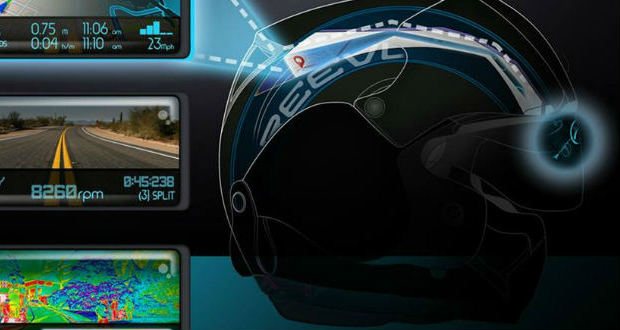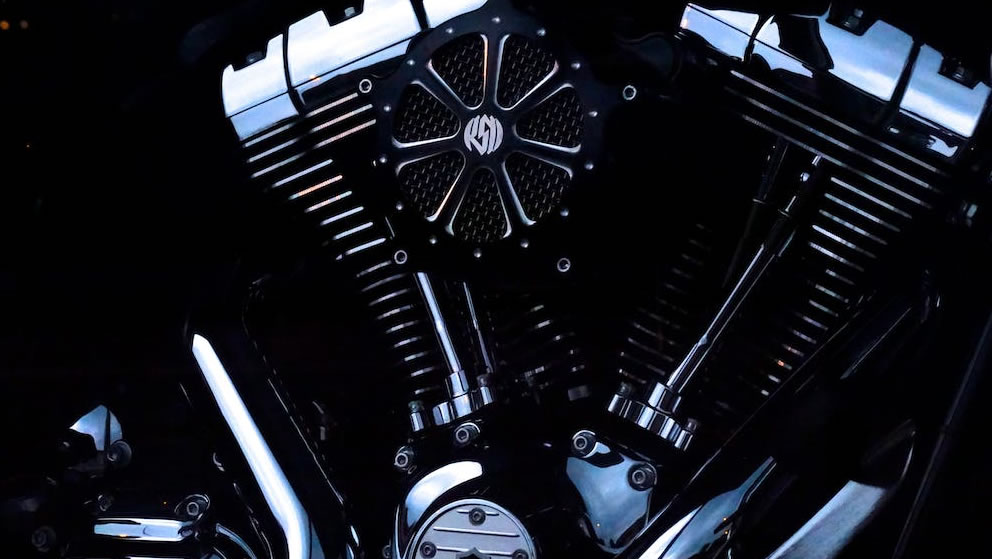Do you want an optical class 101 and safe motorcycle helmet visor? If yes, then I have good news for you. In this article, you will learn about top 11 technologies that will improve performance and safety of your helmet visor.
Let’s dive right in.
1. Anti-fog Coating on Helmet Visors
According to the U.S. Department of Transport, fogging is one of the leading causes of road accidents. It is therefore important to adopt a mechanism that can completely eradicate the fogging phenomenon.
Normally, fog manifests itself as tiny water droplets on the motorcycle helmet visor that blur vision.

But, what exactly causes fogging on helmet visors?
Fogging is due to the drastic change in temperature between the outer and inner surface of the visor. As a result, the moisture in the air you exhale will condense, forming tiny droplets or mist. The tiny droplets will interfere with the light transmission, hence, your inability to see clearly. That’s why you need an anti-fog coating for helmet visors.
So, how does anti-fog coating eliminate the fogging phenomenon?
This is a hydrophilic anti-fog coating, which the manufacturers apply on the inner surface of the visor. It eliminates fogging through molecular interaction between water droplets and hydrophilic ingredients.
That is, when water droplets begin to form, hydrophilic ingredients reduce their surface tension. As a result, they spread into a very thin film that allows light to pass through.
2. Anti-fog Visor Insert
A visor insert is a flexible thin transparent film that fits on the motorcycle visor. It is a soft anti-fog film with permanent anti-fog properties. Therefore, it can eliminate the fogging phenomenon even in extreme weather conditions.
Unlike the anti-fog coating, the anti-fog visor inserts use a more advanced technology to prevent fogging on helmet visors.
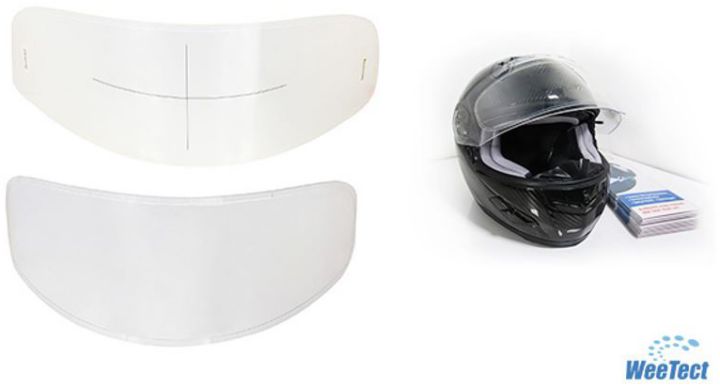
During the installation process, the inserts bonds with the helmet visor. This results in motorcycle helmet visors with airtight space between the visor insert and helmet visor. Remember, fogging occurs due to rapid change in temperature that causes condensation of small water droplets (fog). So, by stabilizing the temperature, it controls what causes fogging – fluctuating temperature.
In addition to this, the visor insert has hydrophilic substrates. Just like the anti-fog coating, it eliminates any fogging through molecular interaction. In short, unlike the anti-fog coating on helmet visors, anti-fog visor inserts depends on two mechanisms to eliminate fogging. It has a universal design, which can fit virtually all motorcycle helmet visors. Below is a video showing how to fix the WeePro anti-fog visor insert:
3. Photochromic Technology for Helmet Visors
Simply put, this is a situation where a motorcycle visor tints on exposure to a specific threshold of UV light. In the absence of that UV light, it reverses back to the original color or tint (becomes clear). To achieve this, the manufacturers add photochromic ingredients/compounds.
Since motorcycle visors are made from polycarbonate due to its lightweight, superior optical properties, impact resistance and shatterproof; they use of carbon based photochromic compounds. These compounds include the naphthopyrans or indenonaphthopyrans. Depending on the degree of UV light intensity, they undergo reversible structural changes thereby tinting the visor.
The good news is: Even if your helmet visor is not photochromic, there are visors inserts that serve the same purpose. You will simply insert them like the WeePro anti-fog visors.
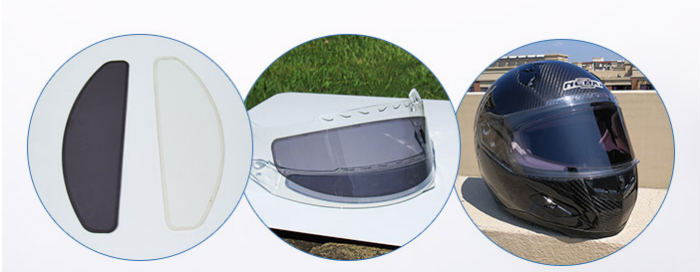
Normally, the color change takes place instantly, while the fading process takes about 10 seconds (say from 82.9% to 11.2%). With photochromic helmet visors or photochromic visor inserts, you don’t have to carry an extra visor or insert. It will automatically change depending on the weather condition.
This will protect you from UV radiation (UVA & UVB) or bright light from the sun. They provide comfort and ensure convenience by automatically adapting to indoor or outdoor conditions.
However, in case you don’t like the photochromic technology, tinting is also another option.
4. Motorcycle Helmet Visor Tinting
Even as you think about tinting your motorcycle helmet visors, as a general rule, allow a certain threshold of light transmission. Generally, 70% of light transmission is appropriate. Moreover, for your own safety, avoid using tinted helmet visors at night.
Now, let’s come back to the motorcycle helmet visor tinting technology. Unlike the photochromic technology, once you tint the helmet visor, it will maintain that specific color (permanent and irreversible process). So, before you make this decision, you must be clear on what you want to achieve.
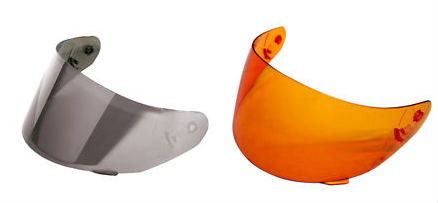
5. Iridium Coating on Helmet Visors
Just like tinting, through iridium coating, you can regulate a number of light properties that can impair vision. With iridium coating, you can achieve different degrees of visible light transmission (VLT). For example, you can vary the VLT from 9% to 60%.
This will depend on where you intend to use the motorcycle helmet visors. Basically, with iridium coating, you can achieve the following:
- Reduce excess light that may harm the eyes
- Regulate light transmission
- Absorb glare
- Regulate reflection
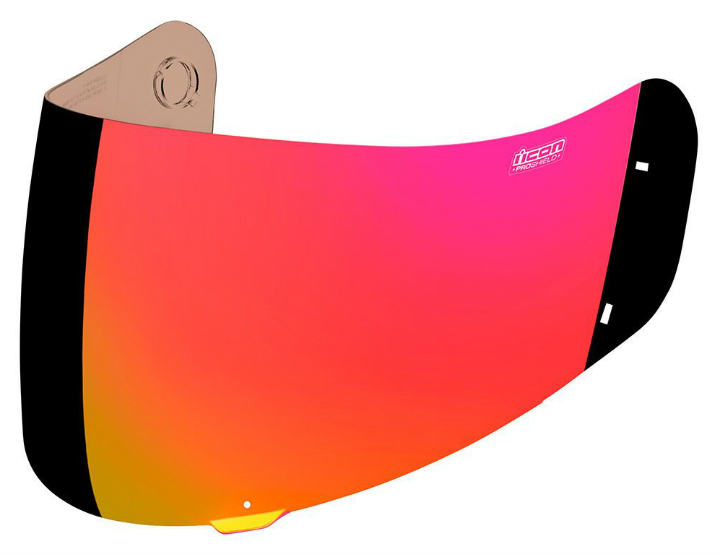
Depending on the type of iridium coating, you can have emerald, pink, sky ice blue, orange, gold, etc. Each coating comes with unique properties and functionalities. For example, a black iridium coating is suitable for environments with extremely bright light. It guarantees a light transmission of 10% with a protection index 3.
To achieve these, iridium motorcycle helmet visor manufacturers use special metal oxides that are superheated. They come in a wide range of spectrum, thereby balancing between reducing glare and light transmission. It is important to know your terrain before choosing an appropriate iridium coating technology for your helmet visors.
6. Mirror Coating on Motorcycle Helmet Visors
Unlike the tinted motorcycle helmet visors, the mirror coating is superior when it comes to blocking harmful UVA and UVB radiations. Depending on the quality, thickness or layer of the mirror coating, it can reduce the UV intensity by 10% to 60%.
From experience, I find mirror coating on motorcycle helmet visors a perfect choice for terrains in sandy, high altitude or snow prone areas. This technology is also called flash coating or reflective optical coating.

Normally helmet visor manufacturers apply the mirror coating on the outer surface of the visor. It is the reason why you will see grey or brown color on the outer surface of these visors. The main purpose of mirror coating is to reflect excess light that causes blurred vision when riding motorcycles.
Just in case you cannot find mirror coated motorcycle helmet visor, a chrome coating can be a perfect alternative. Let’s see what it is and how it improves safety:
7. Chrome Coated Motorcycle Helmet Visors
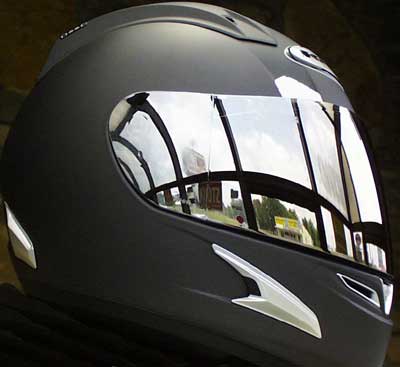 At times, chrome coating is a perfect alternative when you want to achieve an optical class 1 property. Depending on the quality of coating material, you can achieve 7% to 80% VLT. Chrome is a perfect coating technology whenever you want to increase contrast to the motorcycle visor helmet visor.
At times, chrome coating is a perfect alternative when you want to achieve an optical class 1 property. Depending on the quality of coating material, you can achieve 7% to 80% VLT. Chrome is a perfect coating technology whenever you want to increase contrast to the motorcycle visor helmet visor.
Like other motorcycle helmet visor technologies, you can customize chrome coating to suit different environments. For example:
- Locust chrome has a 7% VLT. It is suitable for medium to bright light environments.
- Smokey grey chrome has 22% VLT. It is a perfect choice for low to medium light environments.
- Fire chrome with an 18% VLT for medium to bright light environment.
In short, there are many options of chrome coating for motorcycle helmet visors such as silver mirror, iridium sky ice blue, emerald green iridium, iridium purple, etc.
8. UV Protection on Helmet Visors
Nearly all these technologies aim to eliminate different properties of UV light at different stages. However, having a special UV treatment is a must. Remember, polycarbonate sheet, which is the main material for helmet visors is not inherently UV resistant. So, the UV protection not only save your eyes from the UVA and UVB, but also prevents possible yellowing of the visor.
Under normal circumstances, a polycarbonate helmet visor will absorb the UV radiation resulting I reduction of strength, blushing or yellowing. All these manifest themselves as yellowing of the helmet visor. In most cases, manufacturers use a UV protective coextrusion layer. It is basically a layer of an active thin additive.
![]()
9. Hydrophobic Coating on Helmet Visors
Are you tired of cleaning the motorcycle helmet visor when on the roads? Well, hydrophobic coating on helmet visors offers a perfect solution. Normally, I refer to it as “self-cleaning” coating for helmet visors. Unlike the hydrophilic coating, hydrophobic are water repelling substrates.
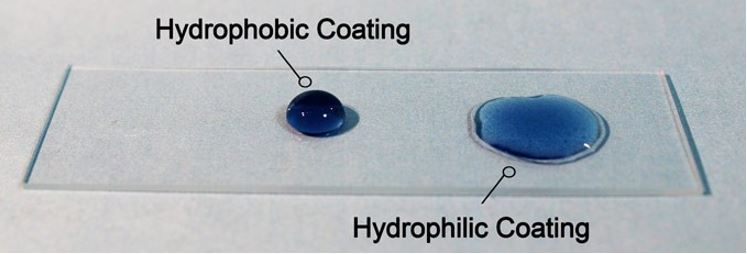
Therefore, by applying a hydrophobic coating on the outer surface of the helmet visor, any water droplet will be loosely attached to the surface. So, as you ride your motorcycle, they will eventually fall off leaving behind a clear surface.
The hydrophilic coating will ensure that neither dust nor dirt particles stick on the outer surface of the helmet visor. As a result, the visor will require less cleaning. This will ensure there is no substance of the motorcycle helmet visor that can cause refraction, lower optical transmission or cause any form of optical distortion.
10. Heads-up-Display (HUD) Helmet Visors
With heads-up-display (HUD) technology, you can see everything behind you while still focusing on the road ahead. This is one of the new innovations in the motorcycle helmet visor industry that aims to eliminate all possible distractions.
So, how exactly do the heads-up-display helmet visors work?
The HUD helmet visor technology allows riders to have a 360° view without necessarily turning their head or using a side mirror. It projects all information behind the rider on the helmet visor (just in front of the rider). As a result, the rider can access this information while still focusing ahead. It is a technology that was initially available in the pilot helmet visors and now available for motorcycle helmets too.
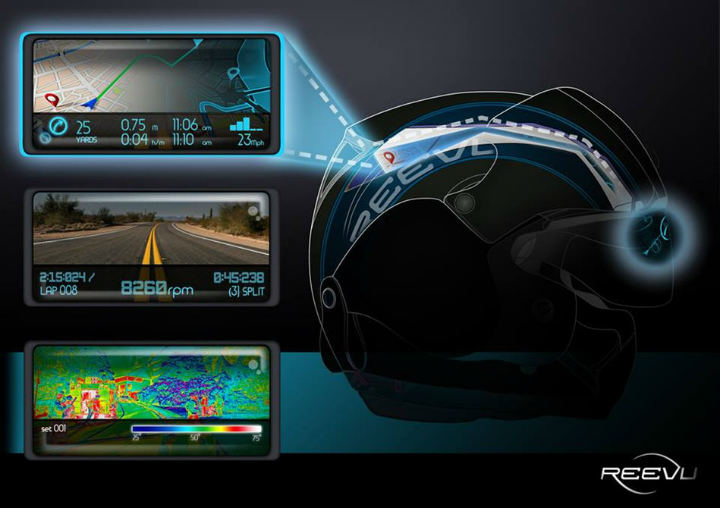
Unlike the ordinary motorcycle helmet visors, the HUD helmets are more expensive due to the more functionality that they offer.
11. Anti-scratch Coating on Helmet Visors
As you are aware, polycarbonate material is susceptible to scratches. Therefore, it is important to coat the surface of the helmet visor with silicon-based anti-scratch coating. This way, your helmet visor can withstand several washings, without any form of scratches or abrasions on it.
Normally, the motorcycle helmet visor manufacturers can apply the anti-scratch coating on both sides of the surface. Remember, scratches on helmet visors not only distort vision, but also interfere with the aesthetic value of the lens.
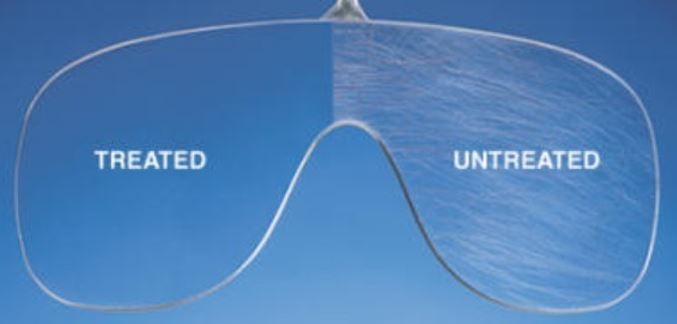
Here, you can choose a range of anti-scratch coating such as for general use (>1H), upgraded (>3H) and superior anti-scratch coating (8H TO 9H). It will all depend on how well you want the motorcycle helmet visor to be scratch resistant.
Even as you evaluate all these technologies for motorcycle visor helmets, it is important to note that:
- You should choose the technology depending on your unique terrain. So, you may not have all of them on a helmet visor.
- It is possible to consolidate the technologies to make the visor more suitable for various applications. For example, you can have a helmet visor with HUD, anti-fog and scratch resistant coating, just to mention a few.
Now, it’s your turn:
Which technologies for motorcycle helmet visors to you find the most useful of all?
Please, feel free to share with me your thoughts by leaving a quick comment.
Further Reading
- Anti-fog Solutions: The Ultimate Guide
- Best Bluetooth Motorcycle Helmet 2018 – Buyer’s Guide & Reviews
- 5 Reliable Ways to Test Quality of Anti-scratch Coating for Plastics
- Complete Handbook of Anti-fog Visor Inserts
- Head-up-Display
- Photochromic: Complete Guidebook to Learn Everything about Photochromic Technology
- Guide to Buying Motorcycle Helmet for Women
- What You Should Know About Motorcycle Helmet Visor
- Picking the Best Motorcycle Helmet

Get the best of bikerMetric directly in your inbox, once a week, every week.
 bikerMetric custom metric bobbers, choppers, and cafe racers by honda, yamaha, kawaski, and suzuki
bikerMetric custom metric bobbers, choppers, and cafe racers by honda, yamaha, kawaski, and suzuki
